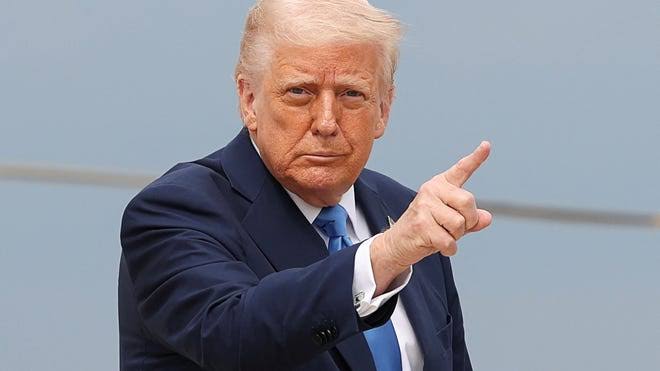
Trump Iran Warning 2025 Sparks Global Alarm: ‘Easy Target’ Threat & Tehran Evacuation

US President, Donald J. Trump has ignited a geopolitical firestorm with a provocative X post that is reverberating worldwide.
The message, accompanied by a striking red-white-blue graphic, declared that “We know exactly where the so-called ‘Supreme Leader’ is hiding.” While Trump stressed that assassinating Ayatollah Ali Khamenei isn’t on the table—“at least not for now”—he warned that patience is wearing thin, adding a blunt note: “We don’t want missiles shot at civilians, or American soldiers.” He finished with a curt “Thank you for your attention to this matter!”
The graphic’s patriotic aesthetic gives the post serious visual impact—no accident, but a maneuver to cultivate domestic support and send a pointed global signal. “Supreme Leader” unmistakably refers to Khamenei, known to have moved to fortified underground facilities since Israel’s September 2024 strike on Hezbollah leader Hassan Nasrallah. That suggests Trump’s boast may be grounded in precise intelligence—while reinforcing the image of resolve .
Notably, Trump inserted “(kill)” parenthetically after mentioning a strike on Iran’s leader. This rhetorical flourish adds a sharp edge while maintaining plausible deniability with the follow‑on “not for now.” It reads as a calculated power play—a warning wrapped in ambiguity.
Nuclear Stakes at a Critical Juncture
Trump’s message appears intertwined with the high-stakes nuclear storyline. With the International Atomic Energy Agency reporting June 2025 enrichment up to 60%, Iran is teetering on the brink of bomb-grade capability . Trump’s restraint seems tethered to fear of nuclear escalation—but his veiled threats imply readiness to pivot if provoked.
Indeed, he’s adopting what experts call “diplomacy with a gun to the head.” Oil futures jumped as much as 2.7% on the news before dipping amid volatility; U.S. stock futures slid after Trump urged civilians to abandon Tehran—a move signaling rising instability .
Israel and U.S.: A Strategic Tango
Adding complexity, Trump underscored that “we now have complete and total control of the skies over Iran,” aligning the U.S. with Israel’s air campaign . While Washington denies officially participating in Israeli strikes, Trump framed it as shared success—deepening ties with Tel Aviv and casting doubt on U.S. neutrality.
There are signs of broader U.S. mobilization: carrier groups steaming into the region, refueling aircraft deployed, and talks of sending envoys should follow-up options be needed . Yet, Trump claimed negotiations are off the table: “We’re looking for better than a cease‑fire…. A real end.” That posture mirrors a new hard‑line “maximum pressure” policy launched in early 2025 to force Iran into diplomatic submission .
Civilian Alarm Spreads in Tehran
Trump’s evacuation directive triggered intense alarm among civilians. Tehran—home to around ten million—has experienced gridlock at gas stations, shuttered markets, and panicked evacuations . While Al Jazeera flagged logistical impossibility, the psychological impact has been undeniable .
Experts warn: turning a megacity into a mass evacuation zone in hours is near‑impossible—but the messaging is exactly the point: ideological pressure dressed as humanitarian advice.
What Comes Next?
Trump’s post is more than a tweet—it’s a stratagem. Is it brinkmanship supposed to pressure Iran into renewed nuclear talks? A message of solidarity with Israel through symbolic air‑space control claims? Or part of a political blueprint aimed at asserting U.S. dominance in a 2025 presidential calculation?
One thing is clear: Trump is upping the ante. With Israeli operations targeting Iran’s enrichment sites and top military personnel, retaliation is already underway. Iran has launched missile salvos; Israel continues airstrikes; and U.S. civilians and markets are rattled .
As of this hour, Trump remains silent on any forthcoming military action—but the imagery, rhetoric, and timing make this a turning point. Will it defuse tensions or crash the region into war?
Stay locked in—this is a story with critical global consequences.


